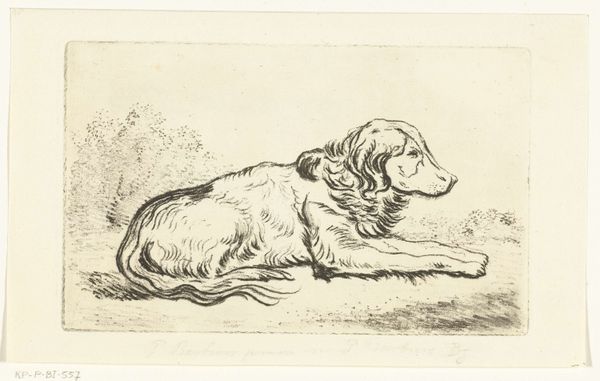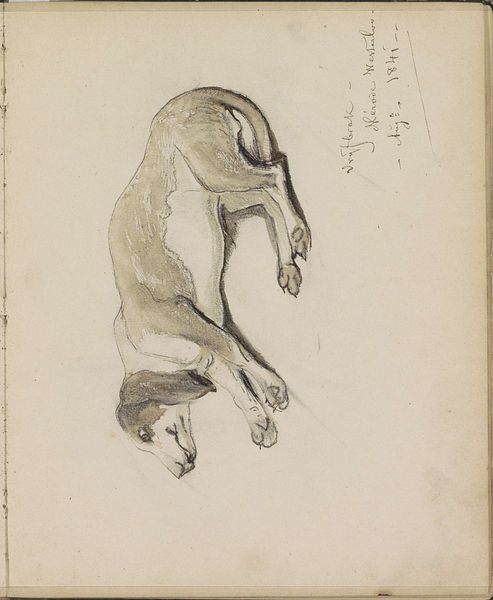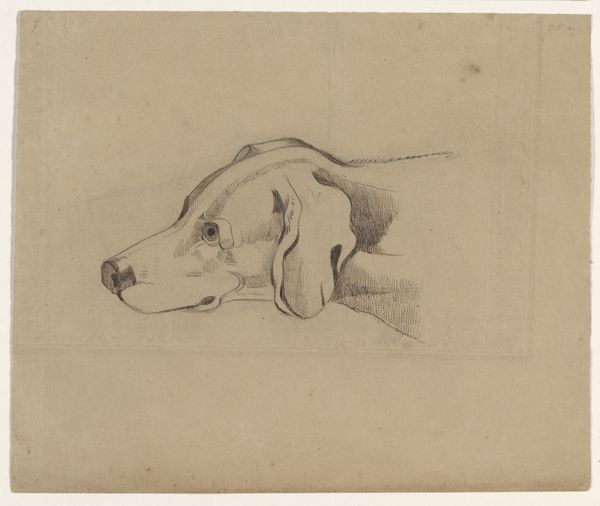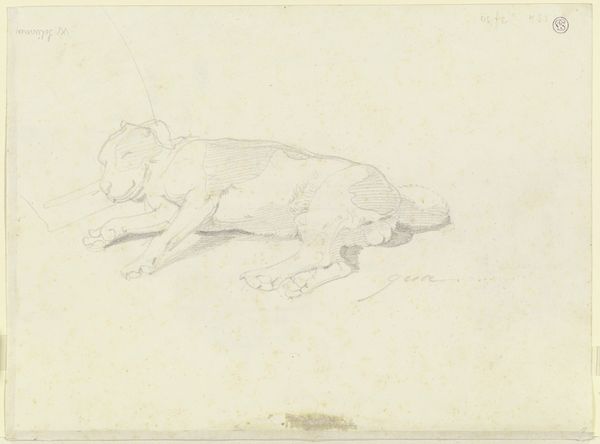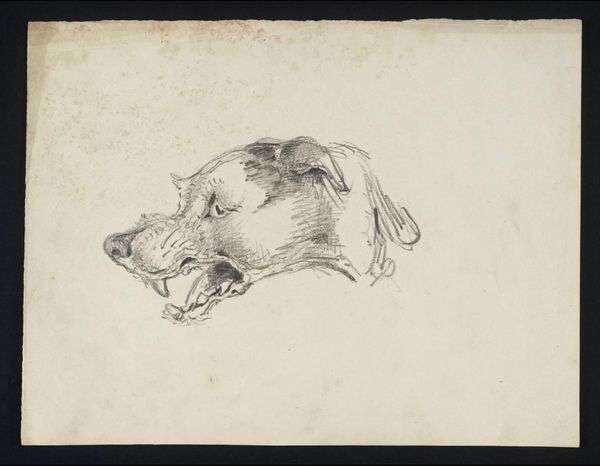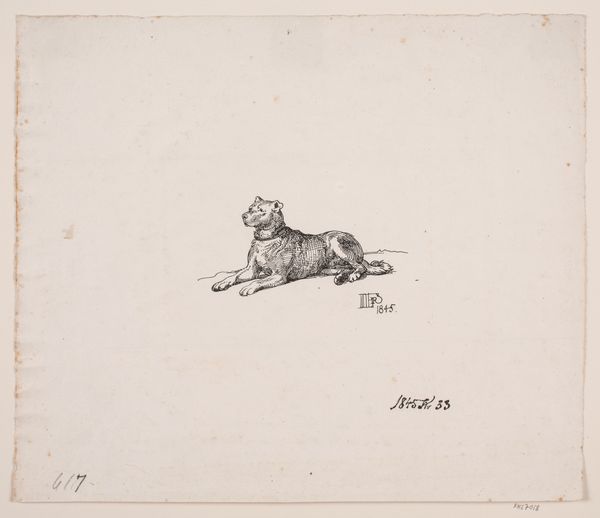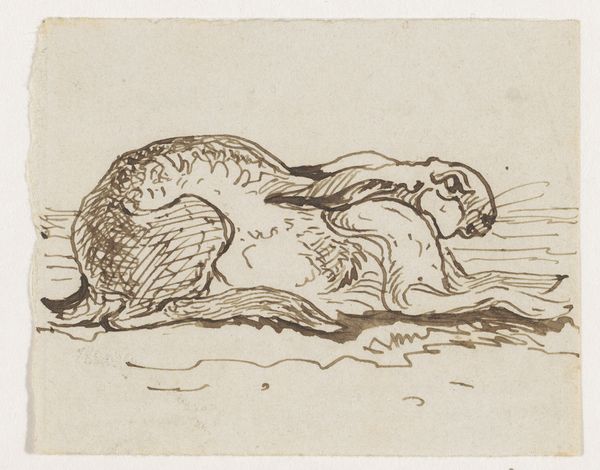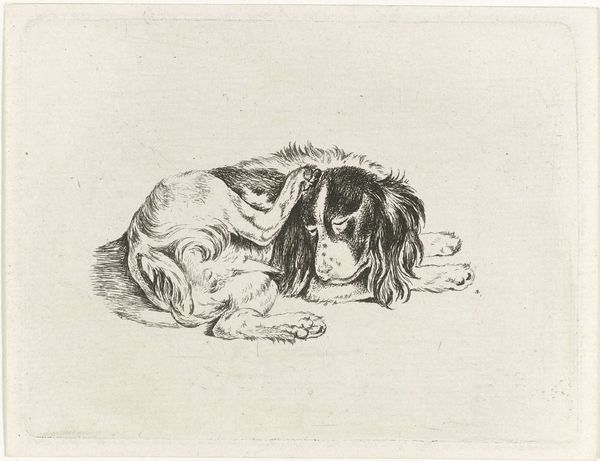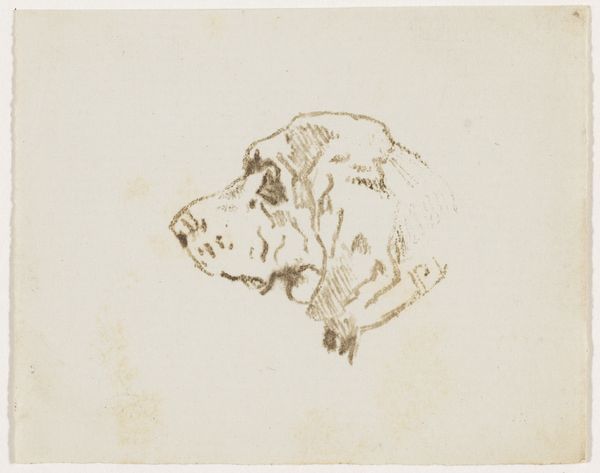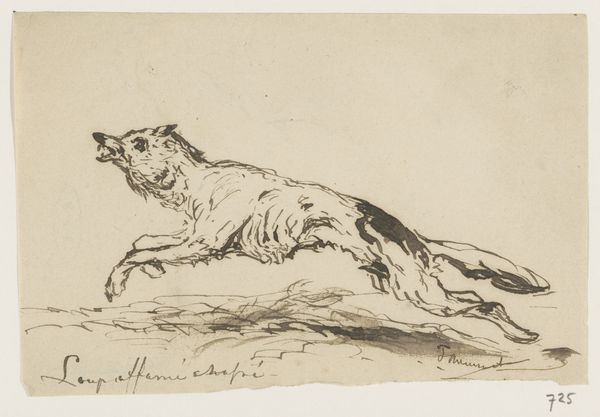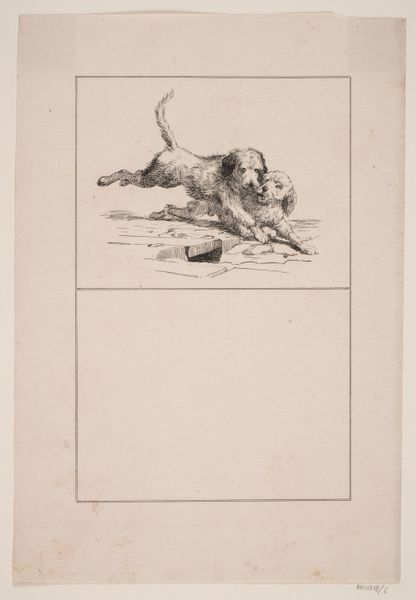
drawing, engraving
#
portrait
#
drawing
#
baroque
#
animal
#
dog
#
engraving
#
realism
Dimensions: height 105 mm, width 134 mm
Copyright: Rijks Museum: Open Domain
Curator: This drawing, created sometime between 1700 and 1800, is called "Kop van een hond"—or "Head of a Dog"—and is attributed to D. Merrem after a design by F. Snyders. It's an engraving. Editor: Immediately, I'm struck by the dog's steady, almost melancholic gaze. It projects such a gentle stillness, yet the detailed lines describing its fur suggest a palpable texture, a life lived outdoors. Curator: Portraits of animals, especially dogs, were incredibly popular, gaining social traction within elite circles during the Baroque period, often serving as symbols of status, loyalty, and hunting prowess. Think of how frequently dogs are represented with royal figures, conveying their connection to nobility and fidelity. Editor: Absolutely. Dogs have been totemic animals for millennia. Their depiction carries deep symbolic weight, signifying fidelity, guidance, protection. Even this individual portrait, divorced from a grand scene, evokes the dog's timeless role as companion. You can feel its watchfulness. The fur around the head and neck seem to signify how connected it is to primal nature and still loyal to the owner. Curator: It’s also important to see these animal portraits as deeply intertwined with evolving ideas about domesticity and human-animal bonds during the 17th and 18th centuries. The growth of scientific understanding and classification of different breeds certainly played a role in how animals were represented, not just in art but in scientific discourse. Editor: Looking at the meticulous engraving technique, one can almost read a sense of veneration. This isn’t just a quick sketch; it’s a carefully considered study, which echoes a societal view of nature to become evermore important. It reminds us that animals and humans always worked together and coexisted with nature, in art but especially in life. Curator: It’s true. Art serves not only as an aesthetic artifact but as a mirror reflecting our evolving relationships with the natural world and our place within it. Editor: Indeed, this head study becomes a silent testament to centuries of intertwined existence, still evoking complex feelings of guardianship and kinship in contemporary viewers.
Comments
No comments
Be the first to comment and join the conversation on the ultimate creative platform.
